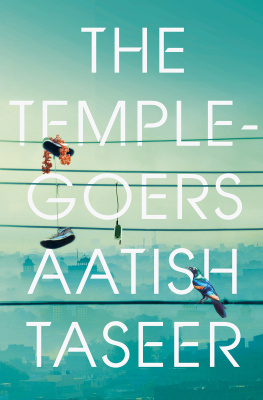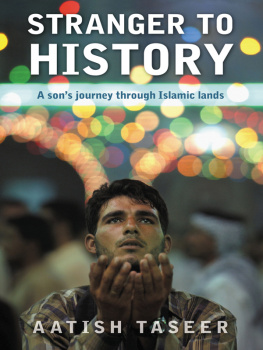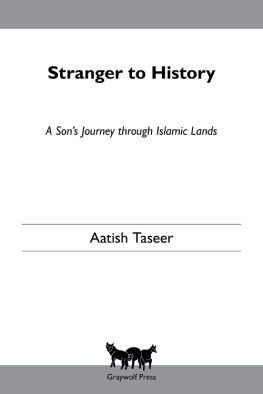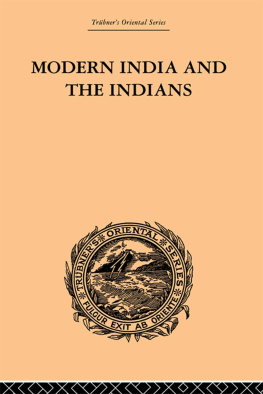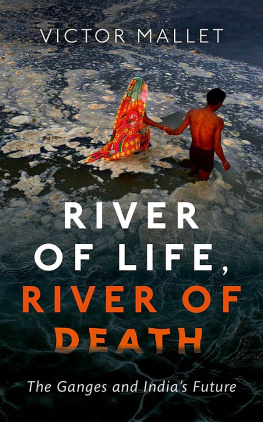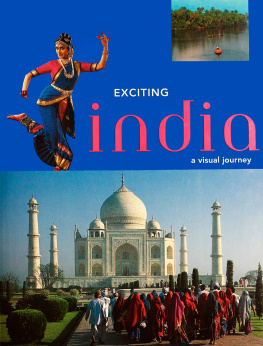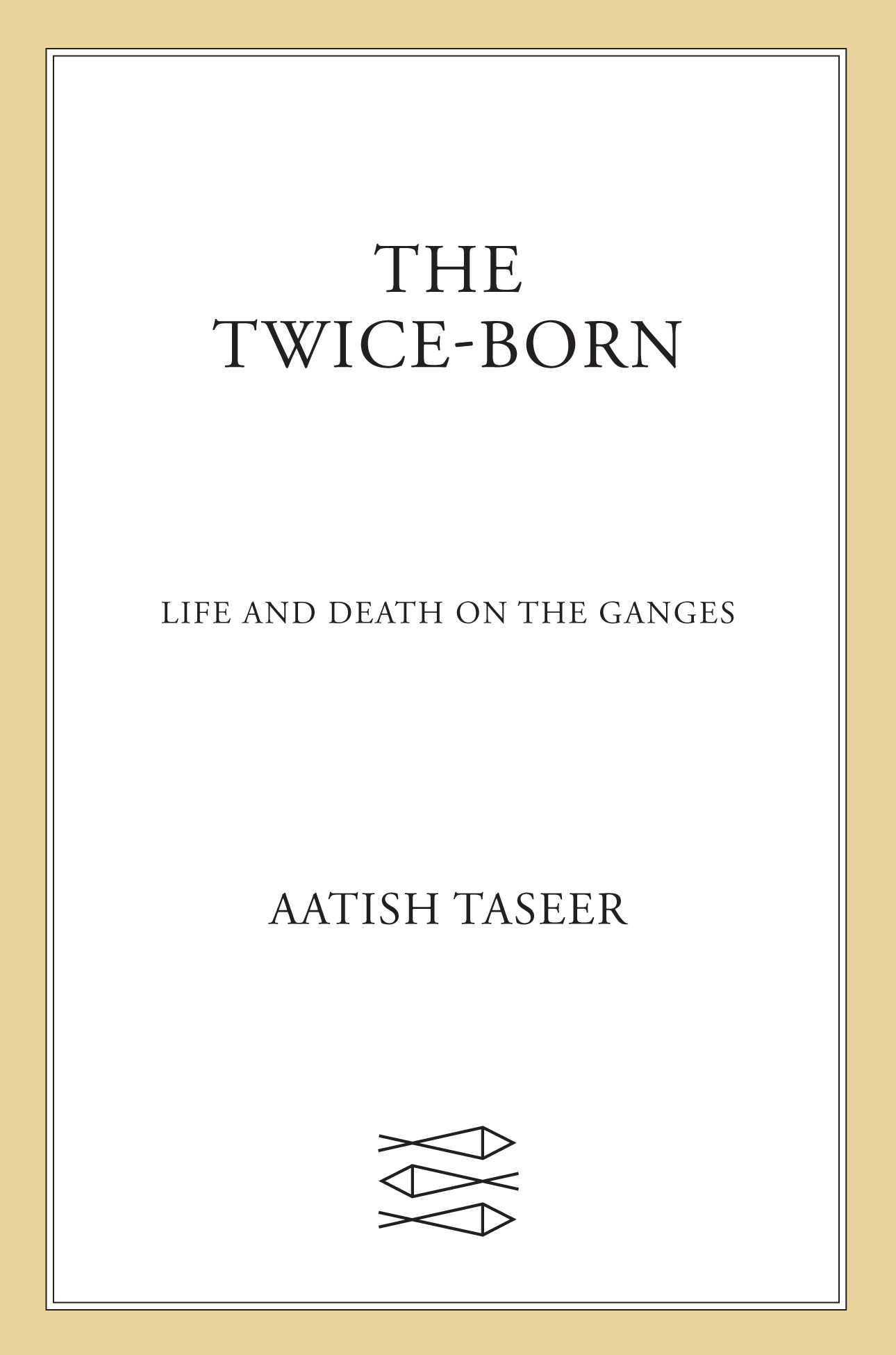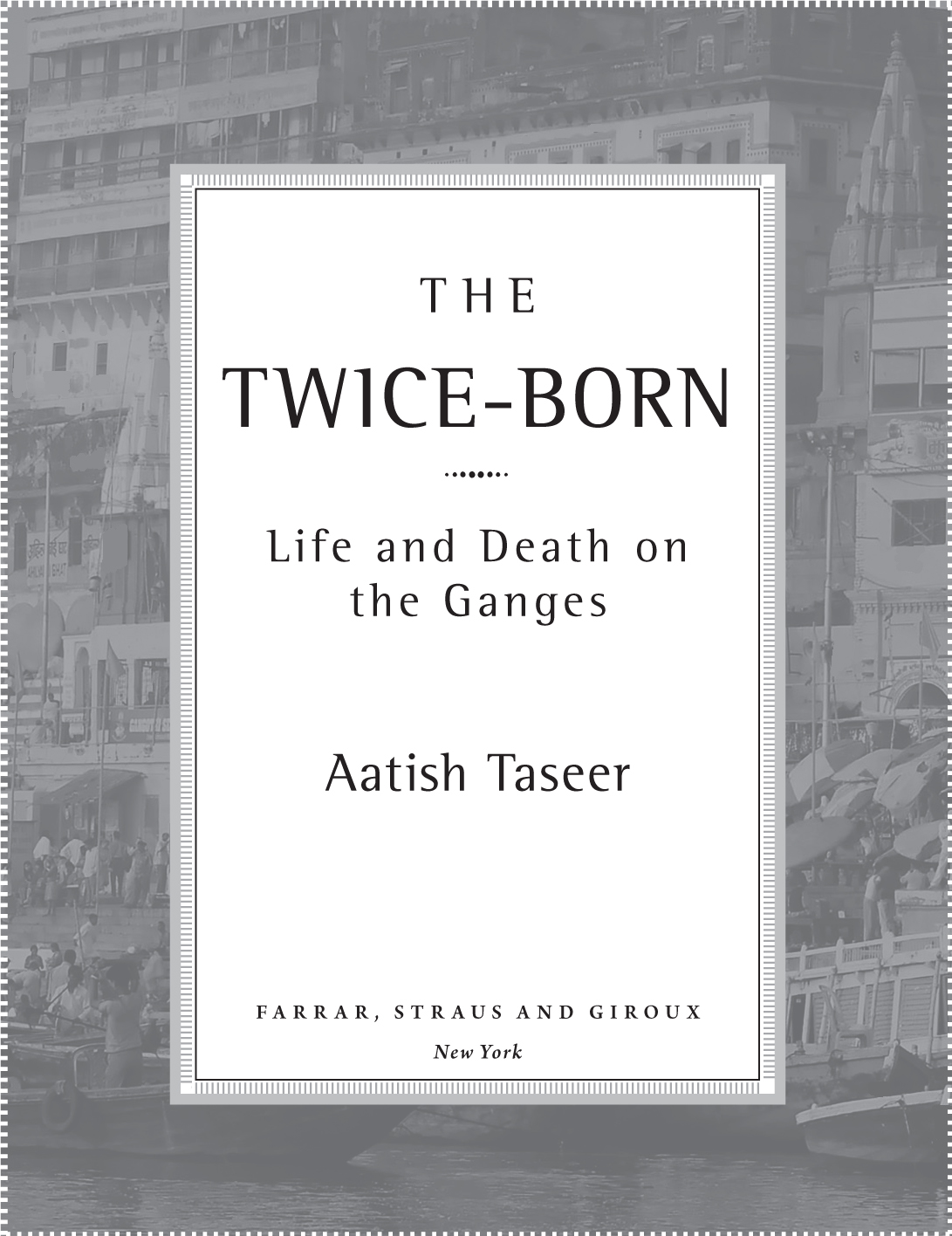The author and publisher have provided this e-book to you for your personal use only. You may not make this e-book publicly available in any way. Copyright infringement is against the law. If you believe the copy of this e-book you are reading infringes on the authors copyright, please notify the publisher at: us.macmillanusa.com/piracy.
India affords the most tragic spectacle of the world, since we see there a living and magnificent organization, akin to, but infinitely more complete than that of medieval Europe, still in the process of destruction. Inheriting incalculable treasure, she is still incalculably poor, and most of all in the naivet with which she boasts of the poverty that she regards as progress. One questions sometimes whether it would not be wiser to accelerate the process of destruction than to attempt to preserve the broken fragments of the great tradition.
ANANDA K. COOMARASWAMY, The Dance of Shiva
One cannot launch a new historythe idea is altogether unthinkablethere would not be the continuity and tradition. Tradition cannot be contrived or learned. In its absence one has, at the best, not history but progressthe mechanical movement of a clock hand, not the sacred succession of interlinked events.
FOR A LONG TIME, I had a recurring daydream of the ancient Indian city of Benares, superimposed onto the geography of New York. From my open window on West Eighty-Sixth Street, my minds eye followed the westering sun over a roofscape cluttered with heat pumps and slim steel chimneys. In the distance, the curved blades of a turbine vent glinted in the late-afternoon light. A sign on the exposed flank of a building read SOFIA STORAGE CENTER.
Beyond, out of view, was the Hudson.
I imagined it, like the Ganges in Benares, taking a deep bend north and flowing toward its source in the high Himalayas. The traffic on the Henry Hudson Parkway was stopped, and on the steep escarpment of Riverside Park were acres upon slanting acres of humanity. Bathers and pilgrims, Columbia University students, and old ladies with coiffured blond and copper hair watched the glittering river with vacant intensity. Ghats went down in two-hundred-yard flights, like stone bleachers, to the edge of the river, where long wooden boats rocked gently in the bilge water. Corpses, wrapped in their gold brocade, lay on bamboo biers, awaiting cremation.
The sky darkened, and silhouettes appeared in the yellow rectangles of the tall apartment buildings on Riverside Drive. The air was high with clouds of incense, the crashing of bells, and frantic chanting in Sanskrit. The people of two cities, and myriad systems of belief, poured out onto the riverside.
The liminal hour stretched out. A daytime darkness silvered the city. Thousands watched through special glasses; thousands more stood waist deep in water, their heads lowered, muttering prayers. Old men with knotty hands leaned on their wooden staffs; women carried babies on their hips. There were farmers and laborers, bank clerks and UPS deliverymen. A party of schoolchildren observed the changing shape of the sun through a steel colander. As its disk went dark, some cried, Beautiful! Others stood in solemn terror as Rahu, the eclipsera demon riding a chariot drawn by eight black horsesswallowed the sun.
BENARESVARANASI, as it is known officially; Kashi, as it has been known for millennia by the Hindus, who regard it as their holy cityis only eight hundred kilometers from Delhi, where I grew up.
In my midtwenties, after college in America and a couple of years spent working as a reporter for Time magazine in New York and London, I found myself living in Delhi again. I was working on my first book, Stranger to History, a memoir about my father, who lived in Pakistan, and from whom I had been estranged for most of my life.
My time in the West had given me an outside view of my world in Delhi, robbing my life there of its easy, unthinking quality. I thought I should do something, by way of traveling or learning, that would help me establish a connection with India at large, the country that lay beyond the seemingly impermeable confines of life in Delhi. I wondered if I should learn Sanskrit, the ancient language of India. In the early centuries of the Common Era, it had served as a lingua franca for the learned in a region that stretched from modern Afghanistan to Indonesia. Sanskrit was no longer spoken, but, like Latin or ancient Greek, it retained its liturgical function among Indias Hindu majority. I would have had some notion of a vast body of literature in Sanskrit, but, as more an absence than a presence, it was further proof of an intellectual inheritance that had not come down to me. Absences can be suggestive, and I wondered if a voice from the past might serve as a beginning point in my quest to reconnect with Indias history and language. That was why I went to see Mapu, an old friend of my mothers. He was among the few people I knew who had sought to regain what a colonial education had denied him: he had attempted a version of Frantz Fanons return to self.
We sat in Mapus office in a lush enclave of New Delhi. The room was bright and bare, save for a painting of a blue dancing Shiva. Mapu was dressed in a white kurta, ribbed and starched. He had a classical face, prominent eyes and cheekbones. He was in his sixties but could still erupt into fits of childish laughter.
When I told him of my interest in Sanskrit, he began to speak of Kamlesh Dutt Tripathi, the former head of Sanskrit at Banaras Hindu University. Mapu described Tripathi as steeped in Indian myth. He is someone who can pass a flowering tree, pick one, and say, Mapu, you know, this is the flower that Kalidasathe great Sanskrit dramatistuses as an earring in such and such a play.
What? Mapu would say. How do you know that? Then Tripathi would show it to Mapu in a text.
This was the kind of knowledge Mapu had seen disappear in India from one generation to the next. The lines of transmission had gone dead, not centuries ago, but in his own lifetime. He felt the loss more acutely than most because he had worked in conservation.
And I did it all wrong! he cried.
He recalled one project in which he laid stone over all the ghats. When it was done, he went up and down the Ganges in a boat, proudly inspecting his achievement. On the shore, an old man approached with a troubled expression. He said, But where will I read my Ramayana?one of two great Indian epics, a Sanskrit Iliad.
What do you mean? Mapu said. Here. There. Anywhere you like.
Have you ever walked on the stone in the heat? It becomes very hot. I wont be able to sit on it.
Mapu was so upset that he went back to Delhi and resigned his post. He hadnt realized that that particular ghat had always been left unpaved. Trees grew there; it was a place of shade and cool, where people could come to read their scriptures and epics.
Isnt there anyone to tell me these things? he cried, seeing in this one crisis many others. No writers, no historians, no architects?
Mapu belonged to an aristocratic family, the second son of the second son of the maharaja of Kapurthala, a princely state in Punjab. His family were renowned Francophiles, but his parents were of a generation of Indians who were still culturally and linguistically bilingual. I had childhood memories of Mapus mother, Aunty Sita, a tiny woman with a cap of woolly white hair. I had a passion for the Hindu gods as a child, and Aunty Sita would recite the Sanskrit hymn associated with the destructive dance of Shiva. Its dark dithyrambic beat gave me goose bumps. Aunty Sita, dressed forever in a widows white and so at home in Indian ritual and custom, had seemed to me the picture of a traditional Hindu woman. As an adult, I was surprised to learn that the same woman had been a celebrated beauty of Europe in the 1930s. She was the muse of Man Ray, was dressed by the American designer Mainbocher; Barbara Hutton, Mapus godmother, was a close personal friend. Mapu had inherited something of his mothers luminosity and grace, but by the time he grew up, the age of Indian bilingualism was over. Mapus generation of upper-class Indians could barely complete a sentence in an Indian language, let alone move between cultures.


